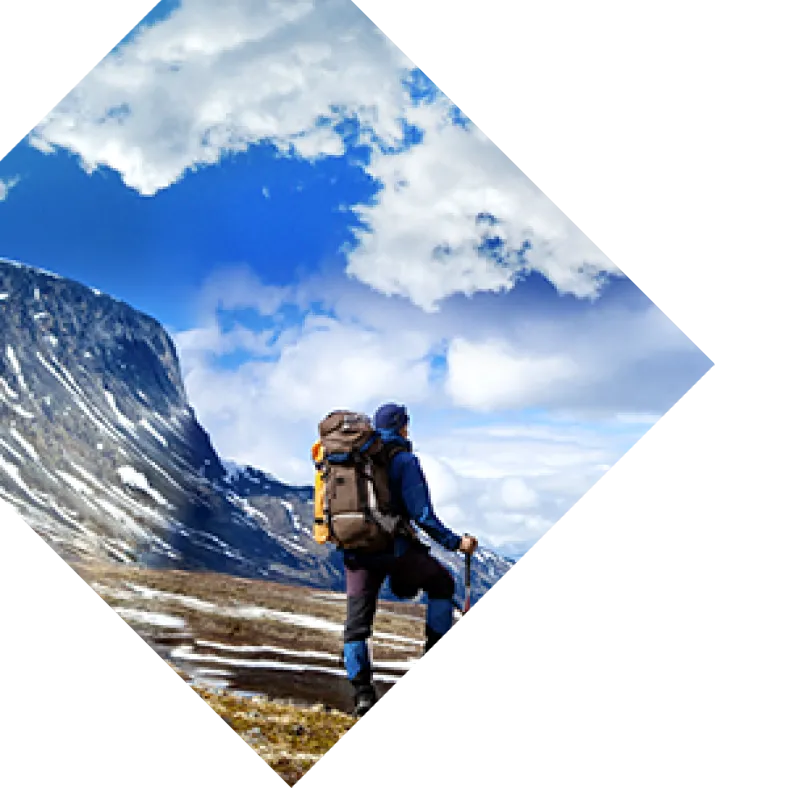I squint attempting to make out the fire tower atop the increasingly shadowy St. Mary Peak. Sounds of Germany’s national anthem interweave with cricket chirps and the hum of alpacas from the neighbor's adjoining farm. We’re in the ancestral home of the Bitterroot Salish, a tribe of the Flathead Nation, and the peak I’m inspecting, once a place for vision quests is considered sacred by the Salish. Established in 1841, the 9,351-foot granite emblem is the original settlement from which Montana grew.  My college best friend, Evelyn, and I sit on the front deck of the Stevensville cabin I share with my then on-again, off-again boyfriend, Bacon, and we watch the sunset over the western horizon. Though Stevensville, despite its infamy as the birthplace of Montana, would not have been my first choice of summer locale, it was growing on me. On loan from friends who were out of state that summer, it made a solid base and I couldn’t deny the appeal of living in close proximity to the magnificent hikes in the Selway-Bitterroot Wilderness. My dog, Kelvin, certainly agreed. The fiery hues swirl over the peak and Evelyn, a native of Germany, continues to practice gracefully bellowing her fatherland’s song. Rough and rugged like the West, Germany’s national anthem forms our primary line of defense when warding off predators on the trail. We have found that like my Polish forefathers, bears, mountain lions, wolf packs, and even squirrels also tend to shy away from its tangy tune. Tomorrow, Evelyn, the dog and I, will hike up the majestic path to St. Mary.
My college best friend, Evelyn, and I sit on the front deck of the Stevensville cabin I share with my then on-again, off-again boyfriend, Bacon, and we watch the sunset over the western horizon. Though Stevensville, despite its infamy as the birthplace of Montana, would not have been my first choice of summer locale, it was growing on me. On loan from friends who were out of state that summer, it made a solid base and I couldn’t deny the appeal of living in close proximity to the magnificent hikes in the Selway-Bitterroot Wilderness. My dog, Kelvin, certainly agreed. The fiery hues swirl over the peak and Evelyn, a native of Germany, continues to practice gracefully bellowing her fatherland’s song. Rough and rugged like the West, Germany’s national anthem forms our primary line of defense when warding off predators on the trail. We have found that like my Polish forefathers, bears, mountain lions, wolf packs, and even squirrels also tend to shy away from its tangy tune. Tomorrow, Evelyn, the dog and I, will hike up the majestic path to St. Mary.  That evening, I doze off imagining the three of us in 1805 as characters in the Corps of Discovery, first laying eyes on this fabled piece of the Louisiana purchase. I am Lewis, Kelvin is Seaman (the legendary black Newfoundland) and Evelyn is Clark, because unlike Lewis and me, she did not have a dog whom she dragged around the continent. The Bitterroot Valley, much opposed to the freshly luscious Bitterroot Range and its accompanying wilderness, is an arid desert topped with various forms of sharp, dry brush. In the morning we grab our packs and make the drive up to St. Mary’s Peak trailhead. A long and winding dirt road takes us into the Selway-Bitterroot Wilderness, one of the 10 original wilderness areas first designated by the United States Congress in the Wilderness Preservation Act of 1964. With 1,089,059 acres in Idaho and the remaining 251,443 acres in Montana, the more than 1.34 million-acre Selway-Bitterroot Wilderness is the third largest wilderness area in the lower 48. We exit the car and start our 3.5-mile hike to St. Mary’s summit with a steep slope of lodgepole pine lined switchbacks. When in season, I always make sure to scan the lower parts of the trail for huckleberries and wildflowers. There’s also a wide array of wildlife species including mountain goat, wolverine, Coeur d’Alene salamander, boreal owl, tailed frog, fisher, peregrine, falcon, bull trout, rubber boa, western alligator lizard, pika, moose and black bear. Gaining elevation, we begin to meander through a Snow White-like enchanted forest of twisty, whitebark pines with curving fingerlike branches. Whitebark pine, Pinus albicaulis, thrives at treeline in harsh and rocky subalpine regions. Their curvy, gnarled shapes are a testament to the high wind and treacherous weather exposure they regularly withstand. Midway through the second verse of “Das Deutschlandlied” we hear a frantic knocking sound and look up to see a Clark’s nutcracker ravaging a whitebark pine tree. They are two keystone species who depend on each other for survival and without whom our landscape would appear drastically different. The whitebark pine, which only grows at higher elevations, constitutes a crucial food source for the Clark’s nutcracker, while the nutcracker is the pine’s method of reproduction. By spreading and planting whitebark pine seeds, the nutcracker supports a vital ecosystem of more than 100 other species of plants and animals who benefit from this interspecies mutualism. Due to a deadly mix of blister rust disease and mountain pine beetle outbreaks, whitebark pines have suffered mass mortalities over recent years. As a result, nutcracker populations have declined, creating ripple effects such as disappearing high mountain forests, and a major food source for bears. As the dominant members of the high alpine community, whitebark pine trees play a major role in the hydrology of the drainages they preside over, holding snow piles in the winter and subsequently lengthening periods of streamflow throughout the watershed. Despite a calm, balmy ascent, peak conditions on the western front are exposed, gusty and frigid. Crossing over from the eastern slope, we found the snowcapped mountains and ominous skies to be a striking contrast from the bright summer day that we had just walked out of.
That evening, I doze off imagining the three of us in 1805 as characters in the Corps of Discovery, first laying eyes on this fabled piece of the Louisiana purchase. I am Lewis, Kelvin is Seaman (the legendary black Newfoundland) and Evelyn is Clark, because unlike Lewis and me, she did not have a dog whom she dragged around the continent. The Bitterroot Valley, much opposed to the freshly luscious Bitterroot Range and its accompanying wilderness, is an arid desert topped with various forms of sharp, dry brush. In the morning we grab our packs and make the drive up to St. Mary’s Peak trailhead. A long and winding dirt road takes us into the Selway-Bitterroot Wilderness, one of the 10 original wilderness areas first designated by the United States Congress in the Wilderness Preservation Act of 1964. With 1,089,059 acres in Idaho and the remaining 251,443 acres in Montana, the more than 1.34 million-acre Selway-Bitterroot Wilderness is the third largest wilderness area in the lower 48. We exit the car and start our 3.5-mile hike to St. Mary’s summit with a steep slope of lodgepole pine lined switchbacks. When in season, I always make sure to scan the lower parts of the trail for huckleberries and wildflowers. There’s also a wide array of wildlife species including mountain goat, wolverine, Coeur d’Alene salamander, boreal owl, tailed frog, fisher, peregrine, falcon, bull trout, rubber boa, western alligator lizard, pika, moose and black bear. Gaining elevation, we begin to meander through a Snow White-like enchanted forest of twisty, whitebark pines with curving fingerlike branches. Whitebark pine, Pinus albicaulis, thrives at treeline in harsh and rocky subalpine regions. Their curvy, gnarled shapes are a testament to the high wind and treacherous weather exposure they regularly withstand. Midway through the second verse of “Das Deutschlandlied” we hear a frantic knocking sound and look up to see a Clark’s nutcracker ravaging a whitebark pine tree. They are two keystone species who depend on each other for survival and without whom our landscape would appear drastically different. The whitebark pine, which only grows at higher elevations, constitutes a crucial food source for the Clark’s nutcracker, while the nutcracker is the pine’s method of reproduction. By spreading and planting whitebark pine seeds, the nutcracker supports a vital ecosystem of more than 100 other species of plants and animals who benefit from this interspecies mutualism. Due to a deadly mix of blister rust disease and mountain pine beetle outbreaks, whitebark pines have suffered mass mortalities over recent years. As a result, nutcracker populations have declined, creating ripple effects such as disappearing high mountain forests, and a major food source for bears. As the dominant members of the high alpine community, whitebark pine trees play a major role in the hydrology of the drainages they preside over, holding snow piles in the winter and subsequently lengthening periods of streamflow throughout the watershed. Despite a calm, balmy ascent, peak conditions on the western front are exposed, gusty and frigid. Crossing over from the eastern slope, we found the snowcapped mountains and ominous skies to be a striking contrast from the bright summer day that we had just walked out of.  Zipping into our summer shells, but still freezing, we stare over the spectacle before us. The jagged Bitterroot Mountains continue endlessly across the western horizon. Encoding our last images of the glaciated knife-sharp granite peaks and ridges, we reluctantly turn back east toward the Bitterroot Valley below, where we sat last night peering up at this very point. Heading down St. Mary’s eastern slope we wind through colorful views of the gently rolling Sapphire Mountains and the dry valley floor. I reflect momentarily in the magnificence that every encounter with this place feels otherworldly, like a different planet over the treeline. When the trees no longer obstruct your view, the tower emerges above, seemingly so far away. The wind speeds up by a factor of 10 and the ground squeakers (i.e. pika and other rodents), more exposed now by the lack of vegetation, become increasingly tantalizing to the dogs. It’s electric. At least it could be, because granite is a giant lightning rod.
Zipping into our summer shells, but still freezing, we stare over the spectacle before us. The jagged Bitterroot Mountains continue endlessly across the western horizon. Encoding our last images of the glaciated knife-sharp granite peaks and ridges, we reluctantly turn back east toward the Bitterroot Valley below, where we sat last night peering up at this very point. Heading down St. Mary’s eastern slope we wind through colorful views of the gently rolling Sapphire Mountains and the dry valley floor. I reflect momentarily in the magnificence that every encounter with this place feels otherworldly, like a different planet over the treeline. When the trees no longer obstruct your view, the tower emerges above, seemingly so far away. The wind speeds up by a factor of 10 and the ground squeakers (i.e. pika and other rodents), more exposed now by the lack of vegetation, become increasingly tantalizing to the dogs. It’s electric. At least it could be, because granite is a giant lightning rod.





